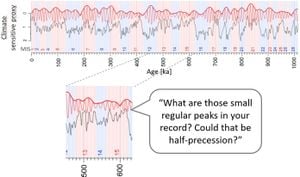German regional traffic reports for February 24th, 2025, highlight significant updates concerning road conditions across various regions.
From Ostprignitz-Ruppin to Remscheid and Gifhorn, motorists faced challenges due to construction and accidents, impacting their daily commutes. The MAZ traffic report offered insights from cities like Neuruppin, Wittstock/Dosse, and Kyritz, noting where slowdowns were most palpable. "Die Meldungen kommen dabei sowohl aus Städten wie Neuruppin, Wittstock/Dosse, Kyritz oder Fehrbellin als auch von den Straßen in der Region..." reported by MAZ, emphasizing the widespread reach of these traffic updates.
Particularly concerning was the situation on major highways. The A24, A19, and A14 saw considerable delays attributed to construction work, with drivers advised to seek alternate routes where possible. This trend of road congestion was echoed across the board, and it was evident from the reporting how deeply the issue affected local drivers.
Meanwhile, the RGA provided insights specific to the Remscheid area, stating, "Die Autobahnen A1 und A46... gehört zu den Top-6-Staustrecken 2023." This was particularly underlined as the region's most notorious traffic hotspots. The A1 alone accounted for nearly 6500 hours of traffic jams between Köln and Dortmund, making it one of the heaviest trafficked areas on the map.
For commuters heading toward Solingen, the A46 was noted as the primary route linking major urban centers. The renovation project at the Wuppertal-Nord interchange stands out as one of the significant infrastructure efforts planned for the coming decade.
A spotlight was also thrown on nearby roadways, such as the B229 and B237, which are integral for local connectivity. The B51, connecting the A1 and various intersections, exemplified the busy thoroughfares prompting alerts and warnings from traffic monitors.
About 400 km northeast, Gifhorn presented its own set of challenges. "Die Verkehrslage aktuell in Gifhorn und Umgebung" said AZ/WAZ, indicating the prevalent slowdowns affecting the A2 and A39 highways. This aspect became increasingly relevant, reminding drivers about the impact of traffic regulation and the necessity of staying updated.
Data collected for these reports primarily stemmed from TomTom, which utilized GPS coordinates from millions of devices to compile traffic information. This formed the backbone of the reports issued across different regions, allowing for real-time updates every five minutes, ensuring accuracy even as conditions changed rapidly.
Across all regions covered, the voice of reason echoed throughout the traffic reports, urging all motorists to be considerate of their fellow travelers. With thousands on the road, the importance of attentiveness and patience could not be overstated.
These insights serve not only as alerts to immediate dangers but as timely reminders to exercise caution. Such reports are integral, especially during peak travel seasons, and can significantly impact route choices and overall travel experience for commuters.



